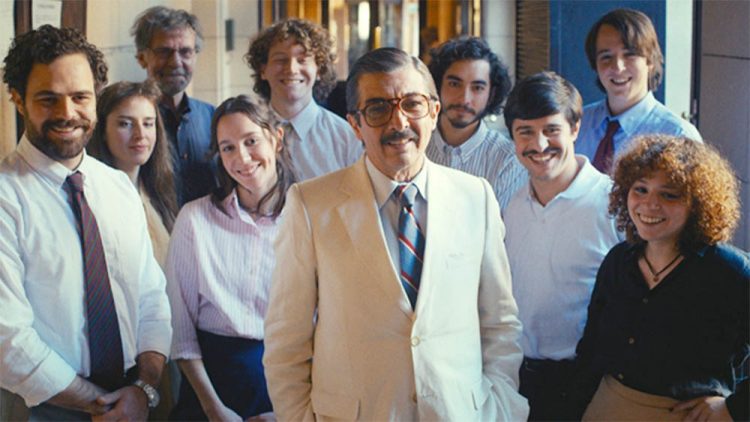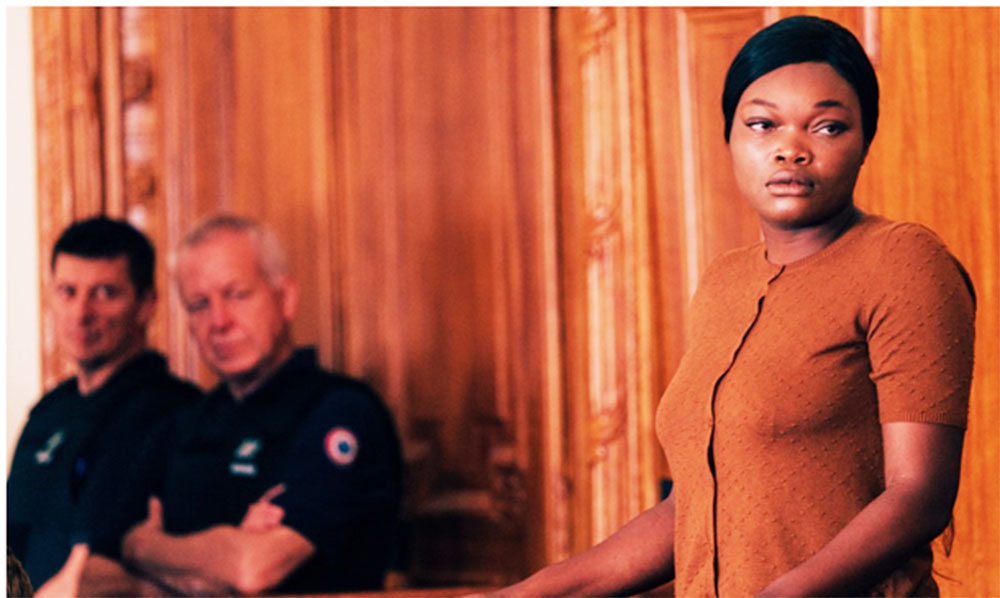
That tradition has continued in 2023 with the 34th year of the festival. Over the course of the second week of January, PSIFF has screened 35 of the submissions for the International Film category at the upcoming Academy Awards. Unlike in 1989, though, many of the international contenders are already available for audiences or due for imminent release. It is a welcome change in the age of streaming, and a desirable spotlight on International Cinema which has faithfully offered eclectic, and compelling alternatives to films in English. It is very likely that when the slate of nominees is announced for the International Film category on January 24, they might be more impressive than the nominees for the traditional Best Film category. Even the more potentially ‘safe’ choices among the shortlisted films offer compelling, and eclectic, forays into film and history that augur well for the continued excellence of international cinema globally. Here are just three of the highlights, each of them engaging with real-life stories of criminality and legal battles, that make for a compelling triptych of international cinema.

French documentarian Alice Diop makes her fiction feature-film debut with the incredibly ambitious and focussed legal drama “Saint Omer”. And yet, calling “Saint Omer” a legal drama belies the thorny and complex vicissitudes of the film. The real-life crux of the film rests on a 2016 trial. Fabienne Kabou, a Frenchwoman of Senegalese origin, was tried for the murder of her 15-month-old baby in Saint-Omer, a town in Northern France. Kabou reportedly told police that evil forces had driven her to leave her baby on a beach to drown. But the potentially lurid logline of the trial, which Diop attended, is only part of the intricate intercultural story that Kabou’s story became, and the intricacies that Diop weaves into this fictionalised account of the trial. In “Saint Omer”, the film, Diop lifts the very real story of this. The woman on trial is now renamed Laurence Coly in the film (vividly played by a riveting Guslagie Malanda). However, Diop’s entry-point into the story is oblique. The story does not begin with the woman on trial, but with Rama, a professor (an equally riveting Kayije Kagame). Rama is a novelist and a professor and intends to write a book on the trial that references Euripides’ “Medea”, literary drama’s infamous child-murderer. Throughout the course of “Saint Omer”, Diop asks much of her audience – their attention, their commitment, their willingness to surrender to the stretches of the story. And we are happy to commit attention to the film’s sharp acuity.

The early sequences of “Saint Omer”, where Rama and her husband go through their daily lives provide a vital precursor to the knottier later scenes in the film. Like Laurence, Rama is also a Frenchwoman of Senegalese heritage and Diop (who co-writes the screenplay with Amrita David and Marie Ndiaye) carefully weaves the notion of othering into the fabric of “Saint Omer”. Where the film is deliberately challenging is in its resistance to contextualising. We meet Laurence while on trial, and we do not interrupt the linearity to flashback to the events of the trial. Instead, “Saint Omer” places us within the context of the French trial system (very different from the Americanised version we are more familiar with from American cinema). From the moment Laurence enters the film, shackled amidst a sea of mostly white bodies, Diop explicitly centres her otherness – that turns her into an absolute vessel of projection for everyone in the film, even Rama and perhaps even us. A courtroom drama sounds like something familiar and basic and in the crudest ways “Saint Omer” might be familiar, except it is also incredibly disorienting and challenging. Diop’s directorial vision means the film simultaneously engages with the familiar and the subversive, sometimes in a single frame. It is built in the sharpness of the script, but also in the crisp editing (co-writer Amrita David) – doing some persuasive communication with intercutting, and Clare Mathon’s thoughtful cinematography which keeps pace with the intelligence and sharpness of the script. Rather than giving into the rote, this legal drama – with its jarring positioning of the cameras, and its ambitious blocking – places us close to the emotions on display here. Even within the rigid confines of the court system, which the camera imitates, “Saint Omer” feels like a sociological manifesto on race and gender that finds room for the spontaneous in the confines of the rigid.
Denmark’s submission, “Holy Spider’’, is a reminder of the oddities of this category and about geopolitical cinema. In many ways this is an Iranian film. Its director (Ali Abbasi) is Iranian, as is his co-writer Afshin Kamran Bahrami, as are the main cast members – Mehdi Bajestani as a serial killer, and Zar Amir Ebrahimi as the journalist investigating the murders. Except, several of the Iranian cast and crew are banned from Iran, including actress Ebrahimi. The film is internationally produced, making for an interesting and welcome submission choice from Denmark. Like “Saint Omer”, Abbassi weaves a fictional protagonist into the world of truth. “Holy Spider” is a genre exercise engaging with history. In 2000-2001 Saeed Hanaei, a serial killer, targeted sex workers and killed 16 women in Mashhad, Iran. The Iranian press came to refer to the crimes as “spider killings” because Hanaei would lure the woman to his home before killing them. The female journalist who tracks down the murderer in “Holy Spider” is an invention, but a valuable one in examining the patriarchal structures of the film’s world. It is a coincidence, but still profound, how “Holy Spider” seems to be in some ways in conversation with “Saint Omer”. Here is another riff on true crime which explicitly engages in a social agenda message while engaging with and subverting familiar cinematic genres. Who wants to see a thriller about a journalist hunting down a serial killer? Many would, and yet “Holy Spider” toys with our expectations. Where “Saint Omer” is incredibly withdrawn and opaque in its cultural critique, “Holy Spider” is riotously indignant, but even in the familiarity of its genre, this still feels profound and even challenging.
It might be odd to call something so structurally familiar challenging, but “Holy Spider” is confident and daring from the get-go. We meet our murderer almost immediately, played by Bajestani who is chillingly determined in his crusade against the vulgarity of sex work. Abbasi is at home in the technical manoeuvring of the thriller genre – “Holy Spider” is excellently paced and moves like a blockbuster in many ways. But even this sheen of genre is only part of the actual film which, surface level conceits aside, does feel like it asks for things of its audiences that they might not be too willing to surrender to. We know the murderer, and we also can surmise his reasons. This is not a whodunit, but something more methodical and melancholy. Without the suspense of the who, or any doubt as to the why, “Holy Spider” feels incredibly taut and intelligent about the how and the moments on the periphery Abassi is obviously stoking for us to pay attention to: the crying child of a victim watching TV as her grandparents castigate her mother in another room; the tired ambivalence of the mother of a dead prostitute, resigned to her fate; every close-up of Ebrahimi’s eyes and lips, a woman out of her time but intent on solving this crime. If “Holy Spider” opts not to contextualise the contemporaneous world of its two-decades old story too much, it is important to think of it as both a legal drama and a story of journalism too.
Santiago Mitre’s “Argentina, 1985” was a surprise winner in the International Film category at the Golden Globes last week, which might suggest that it is earmarked as an Oscar frontrunner. The attention might be disproportionate for the film. In its forays into true-crime, Mitre’s work does feel less ambitious and thoughtful than “Saint Omer” and “Holy Spider” but it offers a compelling study of what sleek bio-adjacent filmmaking looks like. The historical drama covers the 1985 Trial of the Juntas, which prosecuted the ringleaders of Argentina’s last civil-military dictatorship (1976–1983). Our point-of-entry is Argentine jurist and lawyer Julio César Strassera (played by Ricardo Darín), the public prosecutor compelled to take the case and “Argentina” is immediately distinctive in its approach, which is never solemn or detached but is almost
immediately light and jaunty. This is a slick and self-assured approach to historical filmmaking and a great example of playing with conventional film genre, while still managing a firm grasp on stylistic detail. The funnier moments hit harder than the serious ones, and that is not necessarily a bad thing but makes for a curious oddity when the film reaches its final act, and the atrocities of the dictatorship are discussed in full.
Mitre is best with actors, legendary actor Darin delivers an impressive turn as the belaboured prosecutor navigating his family issues alongside his professional ones. There’s a sharp and amusing mid-film sequence where Strassera and his co-prosecutor (Peter Lanzani as Luis Moreno Ocampo) interview a team of young legal students to assist them in the trial no one wants to touch. It’s one of many distinct ways Mitre establishes the importance of looking forward for the younger generation, and so “Argentina, 1985” is at its best when it juxtaposes the ways of the old guard with the possibilities of the youth. Lined up against the ambitious shrewdness of “Saint Omer”, and the visceral anger of “Holy Spider” there is a note of something a bit too slick about “Argentina, 1985”. Even comparing it to historical forays into similar material from this continent (like Pablo Larraín’s phenomenal “No” about the Chilean plebiscite) make it somewhat less lustrous. Still, I am genuinely thrilled by the entertaining cadence of “Argentina, 1985” which, ironically enough, feels like both a repudiation and endorsement of filmic tendencies to soften historical truths in the move towards entertainment. Mitre’s work seems more explicitly geared towards notions of something accessible to the audience, and it’s not a bad intent. “Argentina, 1985” feels fated to be a compulsory film in history classes, and luckily for the students who will watch it for years to come, it finds a way to convey the historical facts with candour and style.






